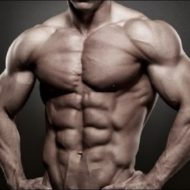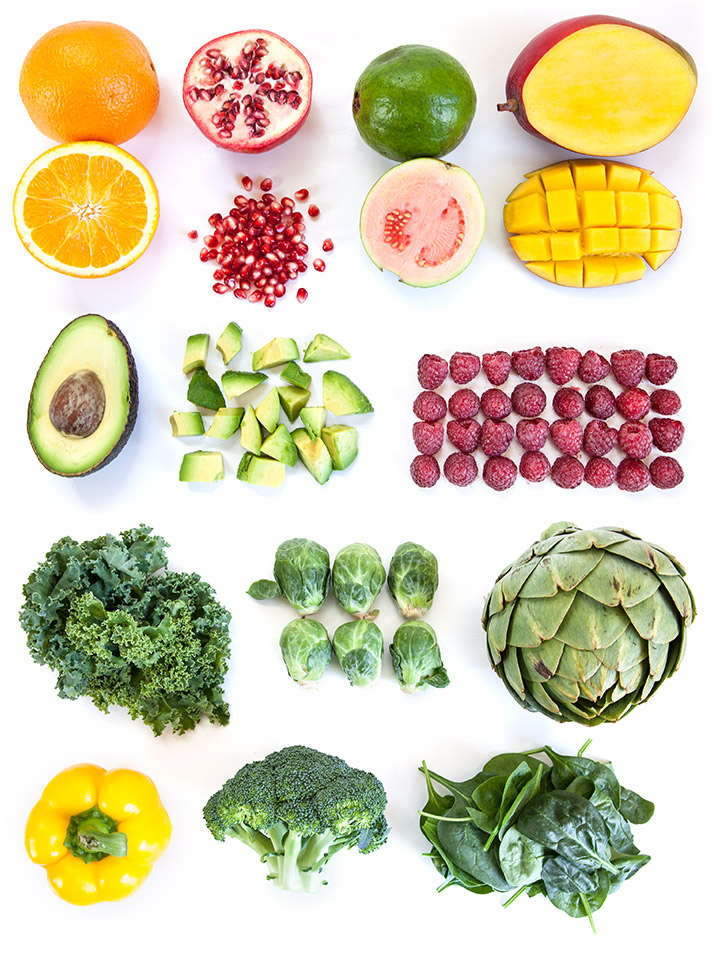What’s one of the biggest misconceptions surrounding weight loss?
To lose weight, all you need to do is exercise…
Often, you’ll hear of people running for miles daily or going to the gym and working out every day, yet not seeing any weight loss.
You may have even witnessed it yourself?
Seeing the same guy jogging daily at same park for months and he’s still as fat as he was the first time you saw him.
Guess what?
He’s not alone…
Thousands of others are just like him.
Now, of course some exercise is better than no exercise at all and credit must go to them for trying.
They are definitely fitter now than if they were just lazing at home on the couch.
But, we are concerned with weight loss and only results matter, right?
That being said, exercise alone is not enough.
There is another BIG part to weight loss.
It’s called nutrition…
Nutrition is one of the most important aspects of your body weight exercise journey.
Don’t leave it up to chance!
The nutritional component in a weight loss program cannot be overestimated.
In fact, I’d say that successful weight loss is 80% nutrition and 20% exercise.
In body weight training there is a saying, “abs are made in the kitchen” and this is very true.
What you eat will have a direct effect on your weight loss results.
More so than your exercise.
Allow me to explain….
A typical intensive 1 hour cardio workout may burn about 400 to 500 calories.
That’s an hour of hard work.
Sweating, struggling and panting.
Eating a big mac meal will put about 540 calories into your body.
This is a meal that you can eat in 20 minutes.
It’s easy and fun.
Can you see how you cancelled out an entire 1 hour workout in 20 mins.
You can eat thousands of calories in a day but it’s next to impossible to burn thousands of calories in a day.
You could try but you’d be exhausted and burnt out within a few days.
Therefore, it is crucial to watch what you eat.
You exercise and training must complement your nutrition and not the other way around.
You’d be smarter to avoid sugary foods, white bread, pasta, white rice and other carbohydrates that are unhealthy.
Consume protein religiously and eat the required amounts of fat…
Calculate how many calories a day you need to lose weight which can be easily done by using free online calorie calculator
Once you know how many calories you need, make 20% of the calories are carbs and the rest from protein and fats.
Contrary to popular belief, eating fats does not make you fat easily.
Eating carbs causes you to put on fat more easily than eating fats.
So, it is a great idea to control your carbohydrates intake strictly.
Once you’re following your nutrition plan, eating the right proportions, you can easily calculate how much exercise you need to do to burn fat.
1 pound of fat is equal to 3500 calories, so a daily calorie deficit of 500 means you may lose 1 pound of fat per week.
So, now you are armed with this info, you can do workouts aimed at burning 3500 calories per week.
Then your fat loss goal is definitely set to be achieved, you get the body you want and enjoy better quality lifestyle.
A Taste Of Vitality Nutrient-Dense Fruits and Vegetables
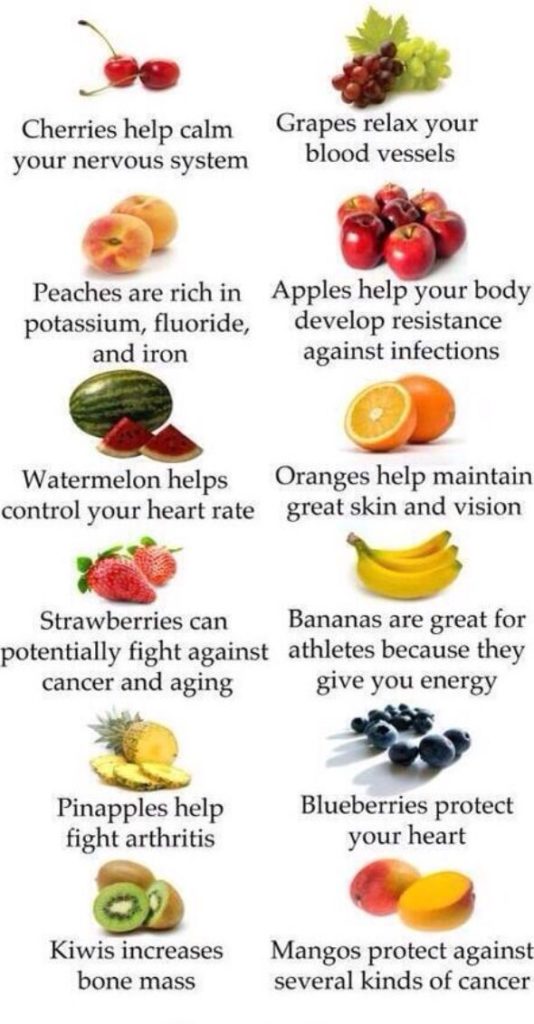
Nature’s most nutritious nutrient-dense foods and discover a healthy new you…
Fruits and vegetables are essential for a healthy body.
Here’s a short list of the most nutritious options so you can choose which fits your nutrition plan!
Losing fat and gaining muscle often means foods you eat are based on macronutrients which best for your goal.
Why? Because if you’re focused on how much carbs, fat and protein you’re getting in each meal.
Typically you may forget micronutrients which are essential parts of a healthy body and great physique.
Micronutrients are essential vitamins and minerals your body doesn’t make.
That means you need to eat these foods which are necessary for your body’s systems to function optimally.
It’s possible to become deficient in certain micronutrients, which can impact your health.
For example, too little potassium can cause muscle cramping, weakness and heart arrhythmias.
Taking a multivitamin may help get those vitamins and minerals your body needs to functional normal, but your body actually absorbs micronutrients much better from real foods which contain enzymes.
It’s important to eat nutrient-dense fruits and veggies instead of popping a multivitamin, which may or may not take care of any holes in your nutrition.
Below are some of the most nutrient-dense fruits and veggies.
Eat up so you can provide your body everything it needs to work at its best…
Let’s start with the most nutrient-dense fruits:
 Mango
Mango
Serving size – 1 mango
Calories 201
Fat 0.8 g
Carbs 32.3 g
Protein 1.7 g
Mango can be slightly harder to find and even more challenging to eat than some fruits.
It’s a great addition to your nutrition plan.
One mango provides 5 grams of fiber, as well as potassium, phosphorus, magnesium, calcium, and huge doses of vitamins A and C.
It’s slightly more caloric than most fruits, so be aware of how much you’re eating.
 Serving size – 1/2 cup pomegranate seeds
Serving size – 1/2 cup pomegranate seeds
Calories 72
Fat 1 g
Carbs 16 g
Protein 1.4 g
Pomegranate has received some special attention in the last few years and for very good reason!
Pomegranate has a unique, delicious flavor and is chock-full of nutrients.
One half cup of pomegranate seeds provides lots of potassium, magnesium, fiber, and vitamins B-1, B-2, B-6, C, E, and K.
Pomegranates are a bit difficult to extract and eat, yet they’re well worth the effort.
The taste and nutritional benefits outweigh a little effort on your part!
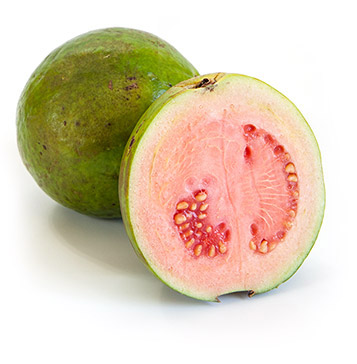 Serving size – 1 guava
Serving size – 1 guava
Calories 112
Fat 1.6 g
Carbs 23.6 g
Protein 4.2 g
Guava might sound like a fruit you should only enjoy while you’re lounging on a beach, it’s a great addition to your nutritional plan.
Guava is high in fiber, niacin, and vitamins A, B-3, B-6, C, and K.
Guava is also rich in lycopene, a powerful antioxidant.
Guava is generally a summer fruit, so get some while you can!
 Serving size – 1 cup raspberries
Serving size – 1 cup raspberries
Calories 64
Fat 0.8 g
Carbs 14.7 g
Protein 1.5 g
Blueberries get tons of praise and love, deservedly so, yet raspberries are a great year-round superfood option.
They’re delicious, also high in vitamins C and K, and contain a healthy amount of folate.
One cup of raspberries also provides 8 grams of dietary fiber.
Add to boost your protein and enjoy a handful on top of your yogurt.
 Serving size – 1 medium orange
Serving size – 1 medium orange
Calories 62
Fat 0.2 g
Carbs 15.4 g
Protein 1.2 g
Oranges are pretty easy to get your hands on year round.
Oranges may be common, yet their ubiquity doesn’t make them any less healthy.
Oranges are excellent sources of vitamins A and C, beta-carotene, and minerals such as potassium and calcium.
They’re also high in soluble and insoluble fiber.
One of the best things about oranges is that they keep well for a long time.
Get some the next time you’re at the store and enjoy!

Serving size – 1 cup sliced avocado
Calories 234
Fat 21.4 g
Carbs 12.5 g
Protein 2.9 g
Although we usually think of avocado as a fat source, it’s actually a fruit, and a really healthy fruit at that!
One cup of sliced avocado contains 10 grams of dietary fiber, 42 percent of your daily value of vitamin B-5, and 35 percent of your daily value of vitamin K.
Avocado also provides big doses of vitamin C and potassium.
If you’re not already eating avocado regularly for healthy fat, now is the time to start!
It’s one of those foods everyone should enjoy.
They’re great in a shake as well as atop a salad.
Next on the list are most nutrient-dense vegetables…

Serving size – 1 cup chopped kale
Calories 33
Fat 0.6 g
Carbs 6 g
Protein 2.9 g
Kale might be trendy, but it’s trendy because it’s so damn healthy.
Kale is rich in vitamins A and C.
Kale has tons of vitamin K, a fat-soluble vitamin that allows proteins to bond to calcium ions.
Kale is also a great source of manganese, copper, fiber, calcium, potassium, and vitamin B-6, and even contains some omega-3 fatty acid.
For maximum nutritional benefit, steam kale for about 5 minutes before eating it.
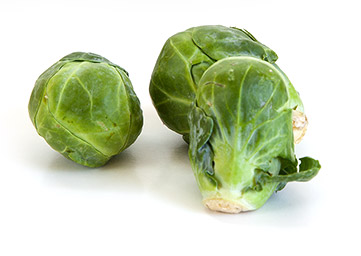
Serving size – 1 cup Brussels sprouts
Calories 38
Fat 0.3 g
Carbs 8 g
Protein 3 g
Love ’em or hate ’em, Brussels sprouts have found a home in the fitness community.
This cruciferous vegetable is rich in sulfur-containing nutrients which enhances your body’s detox systems and offers plenty of fiber to aid digestion.
Brussels sprouts are also rich in vitamins K, C, and B-6, and minerals like manganese, folate and copper.
Brussels sprouts also contain omega-3 fatty acids.
Do yourself a favor and eat these little guys at least once per week!
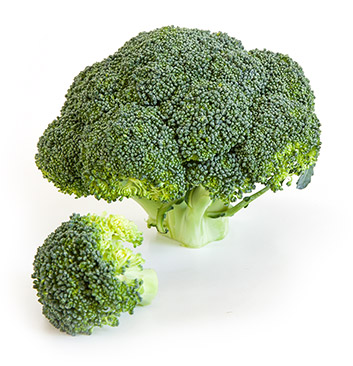
Serving size – 1 cup chopped broccoli
Calories 31
Fat 0.3 g
Carbs 6 g
Protein 2.6 g
Broccoli is a very popular veggie on our list.
Broccoli is a bodybuilding staple because it is one of the most nutritious vegetables on the planet.
In just one cup of chopped broccoli, you’ll get more vitamin K and C than you need in a day and lots of other awesome minerals like potassium, calcium and selenium.
Broccoli is also full of anti-inflammatory and antioxidant benefits.
Broccoli is low in calories, which makes it a good addition to your diet if you’re trying to cut fat, lower your carbohydrate intake, or both.
Even if it’s not on your favorite vegetable list, it’s a great idea to find some way to add broccoli so you like it.
Broccoli is simply a great, healthy vegetable which belongs in your nutrition program, no matter your fitness goal.
 Serving size – 1 medium cooked artichoke
Serving size – 1 medium cooked artichoke
Calories 60
Fat 0.2 g
Carbs 13 g
Protein 4.2 g
Artichokes are awesome, yet people forget they’re a vegetable.
Artichoke is high in dietary fiber, folic acid, and vitamin C.
Artichoke is one of the best vegetable sources of vitamin K.
Aside from vitamins, artichoke is also rich in minerals like copper, calcium, potassium, and iron.
One of the best and easiest ways to prepare an artichoke is to steam it with garlic, olive oil, salt and pepper.
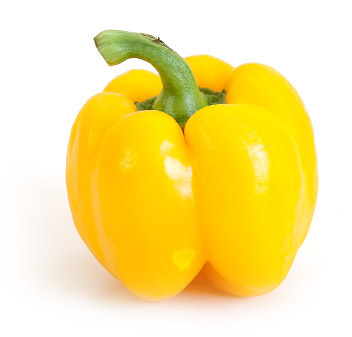 Serving size – 1 large yellow pepper
Serving size – 1 large yellow pepper
Calories 50
Fat 0.4 g
Carbs 12 g
Protein 2 g
Bell peppers of all its various shapes and colors are an amazing addition to your diet.
Bell peppers contain a huge amount of vitamin C and a great sources of vitamin B-6, vitamin A, folate and fiber.
Bell peppers are very low in fat, the little they do have ensures you’ll get fat-soluble nutrients like vitamins A and E.
Bell peppers are absolutely delicious in salads, grilled or just sliced and enjoyed as a snack.
If you like them…eat up!

Serving size – 1 cup boiled spinach
Calories 41
Fat 0.5 g
Carbs 7 g
Protein 5 g
Spinach belongs in your muscle-building nutrition plan.
You can eat it raw or increase the fiber content by boiling it.
Spinach’s dark color means it’s full of phytochemicals that have anti-inflammatory properties.
Spinach is also a great source of vitamins A, K, and E as well as calcium.
Bodyweight Exercise
